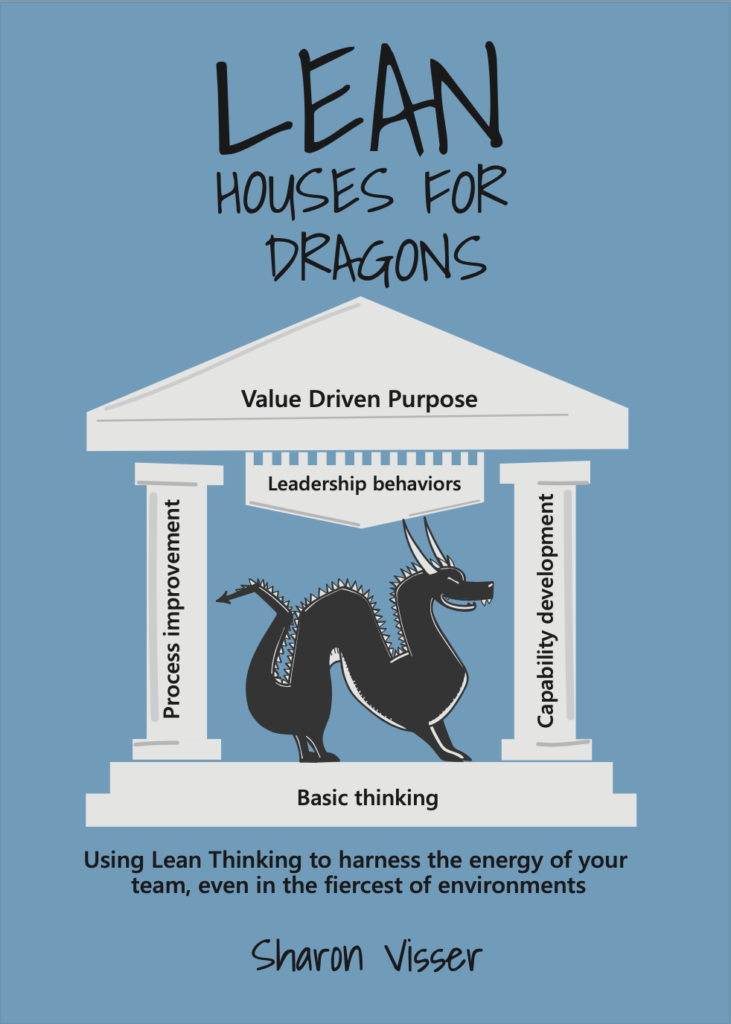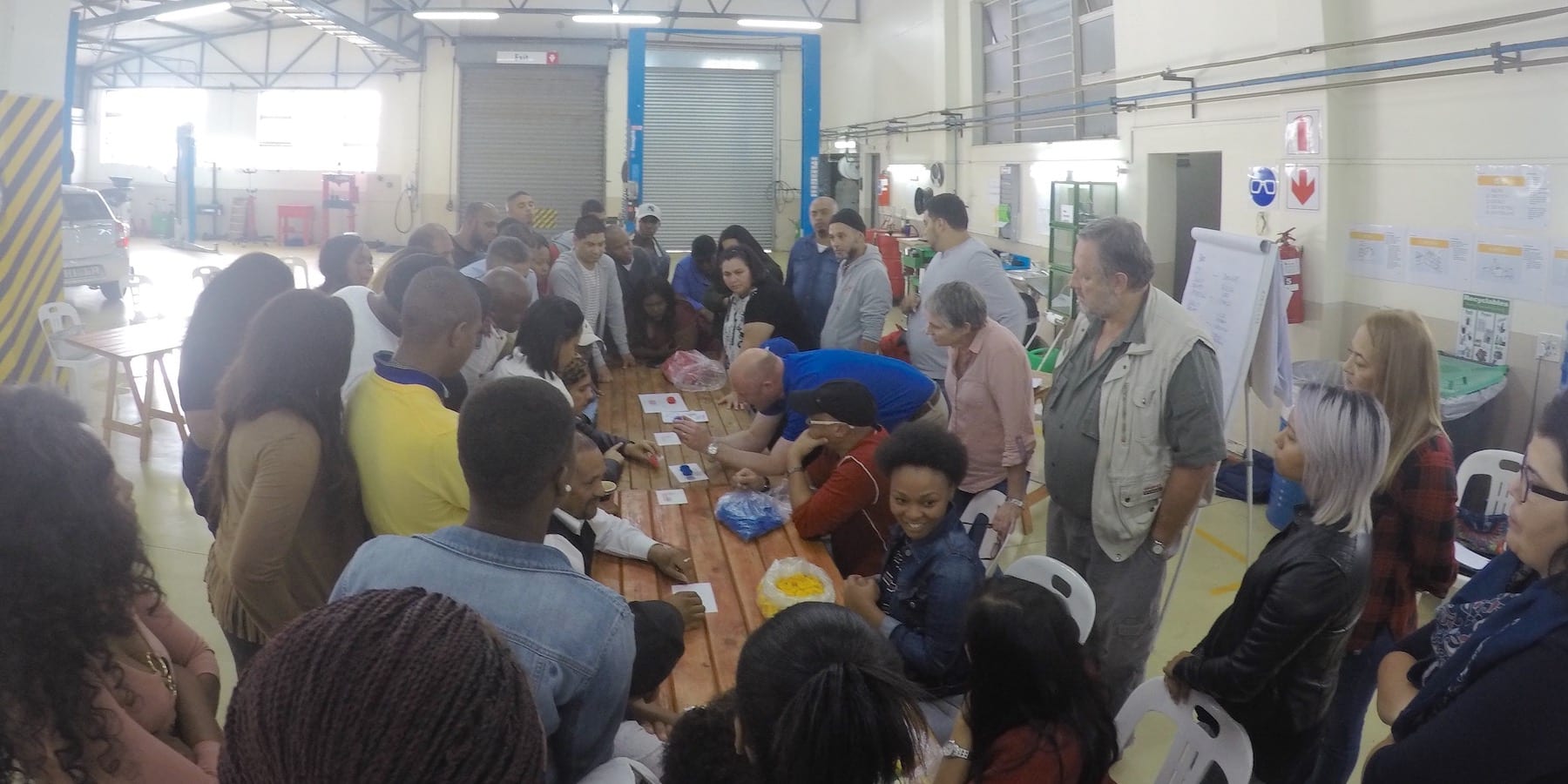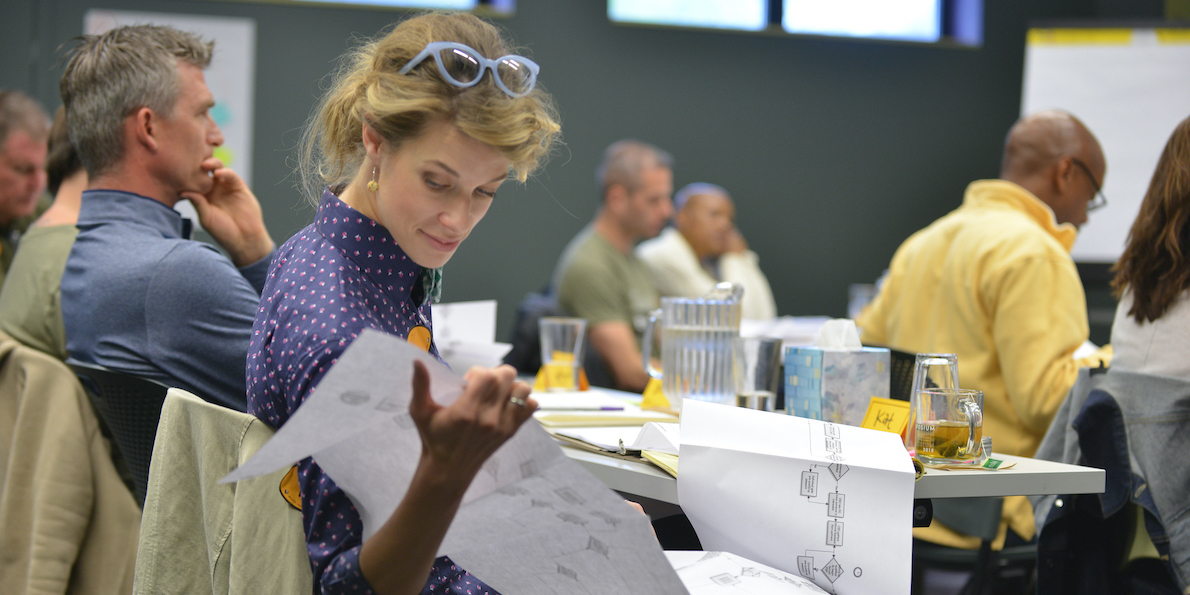
A story of caring leadership and creativity
FEATURE – A leader’s creativity and care for her people can lead to extraordinary results even in the most challenging of environments. As the latest LGN book comes out, the author reflects on one of the most impressive lean transformations you will come across.
Words: Terry O’Donoghue, Senior Advisor, Halfway Group
One of the biggest challenges faced by people approaching Lean Thinking for the first time is, “How do I start?”
In her book, Lean Houses for Dragons, Sharon Visser demonstrates you must start from wherever you are. In this case, the where was a small, isolated village in the middle of a desert, at the edge of a swamp, Maun, in the Ngamiland District of Northern Botswana, a thousand kilometers from the capital and business hub of the country.
The story Sharon tells is a fine example of the time-tested method of learning by doing. To learn, you must do something, but equally important is the reflection on what you have done and what lessons can be drawn from it. Without such reflection, there is very little learning, even if there is much doing.
This book covers a four-year journey and offers some great reflections on the series of experiments done in a retail motor dealership – Halfway Toyota Ngami.
What was the problem? What experiments were tried? What worked? What made them work? From a very first exposure as a novice to becoming the very accomplished leader of a lean transformation, Sharon takes you through her story. Go see, ask why, show respect.
The results she and her team achieved were genuine gains, in both monetary terms and the development of the people at Ngami Toyota. This raises the interesting question – why did it work? Indeed, why do things that work in one setting not work in another, even though the approach and implementation might look very similar?
Even though Sharon was very diligent and very good at going to see and asking why, it is probably the third task – show respect – that laid the foundation for the success she achieved. Leadership and leading a lean transformation are rooted in people and the development of people. It is the showing of respect that made all the difference at Ngami and why the journey was so successful. It starts with care. When the leader demonstrates genuine care for the people, it changes the relationship. This care is shown by the focus and priorities a leader has. Where the motivation is primarily making the work easier for the people doing the work the problems to solve become much clearer.
This is not rocket science. One of the aspects making the implementation of Lean Thinking enduring is that the principles are simple and easy to follow. Look for the work that is not easy to do. Look for people having to bend, lift things, or search for items. Look for them trying to decide what to do next. These are helpful ways to identify what can be improved, to determine the problems we need to solve. We then need to design the experiment to see if we can improve things, establish the measures to be sure we have actually improved them, and do what is needed to keep the feedback timely and clear so that we know if we are straying from the purpose.
By being genuine in concern and care for employees, you lay the foundation for the changing relationship that characterizes real teamwork. The credibility of the leader is vital to establishing the legitimacy of the leader’s role. When the leader’s credibility is established, the alignment of common interests becomes possible. Coming out of a colonial inheritance and all the problematic relationships this has embedded, this shift was one of the most fundamental on the Ngami journey. The clear message that “I matter and each one of us matters” makes it possible to move from a group of passive members awaiting instructions to comply with to active team members participating in finding the best way to do the work. Once people can participate and co-create the future way of working, the virtuous circle of solving problems, making work easier, improving the output and customer experience, and developing the people can begin. More than anything else, this is the story of what can be accomplished by a caring, insightful leader who is focused on making things better in the world.
Toyota, the company that continues to inspire lean transformations around the world, has excelled in developing problem solvers and thinkers over more than half a century, and their success shows in the leadership position they have maintained in the industry for generations. Unfortunately, their proven method is not available to other concerns that are not able to rely on a group of experienced managers who can guide and develop new recruits by setting increasingly challenging tasks and projects for them and coaching them through their problem-solving and learning. If you do not have a core of experienced managers steeped in the skills and practice of problem-solving, how do you go about developing problem solvers? You have to build them from scratch. You have to start from zero. You learn by trying, by being very clear on the purpose and the value that you are trying to deliver. Designing the system to make the work easier for people to do and eliminating the causes of failure. In the words of Deming’s famous simulation game, “Taking the Red Beads out of the box.”
Sharon started with nothing more than what is available to everyone. A curiosity, some basic introductions to Lean Thinking as encapsulated in the early books by Jim Womack and Dan Jones, and a determination to make things better for the people of Maun.
She followed a path of experimentation infused with her unique creativity.
She made work and life better for all those who lived through the journey with her. If it is possible in an isolated frontier village with staff who are mostly the first generation of their families in formal employment, it is possible anywhere and can be done by anyone with the right intent in their heart.
For me, it was the most fun I have ever had at work, and it was a privilege to be able to witness some of it.

Lean Houses for Dragons is available in e-book format from the Kindle Store.
THE AUTHOR

Read more


FEATURE – Our editor learns about the lean work taking place in two successful omelette-based restaurants in the Netherlands.


FEATURE – The principal of the Halfway Ottery dealership explains how their lean culture based on respect and improvement is not only changing the business, but transforming the lives of people in the townships.


FEATURE – To lean out a training organization means to both transform its internal processes and integrate Lean Thinking in its educational offering: the story of ZingTrain.


FEATURE – Toyota recently achieved the #1 spot in sales in the United States after 90 years of leadership by GM, which shows how capable the lean management philosophy is to overcome difficult circumstances in the market.

